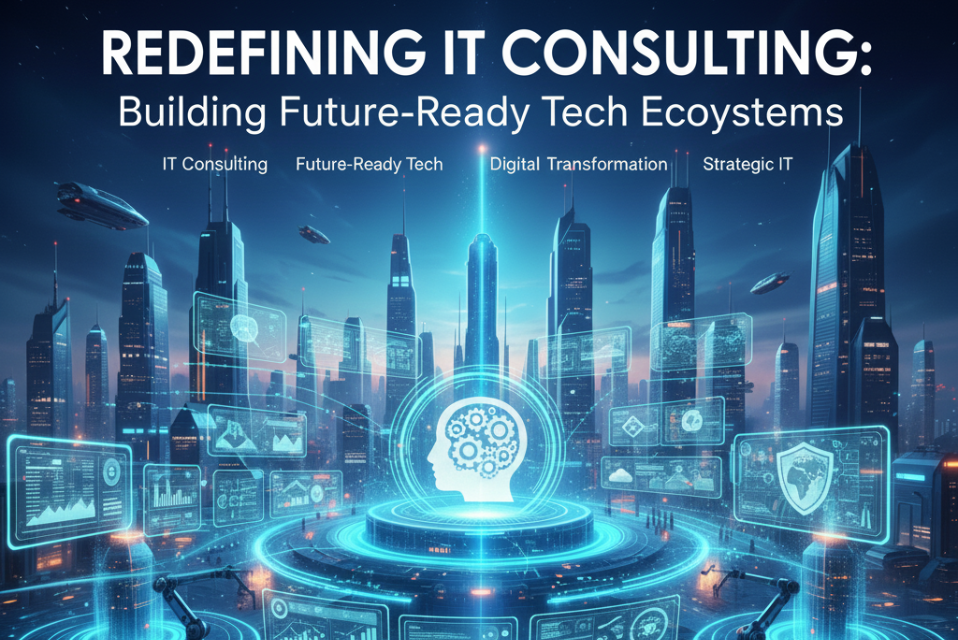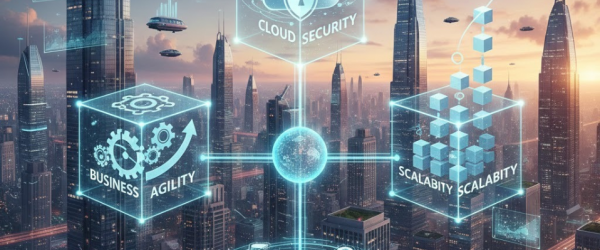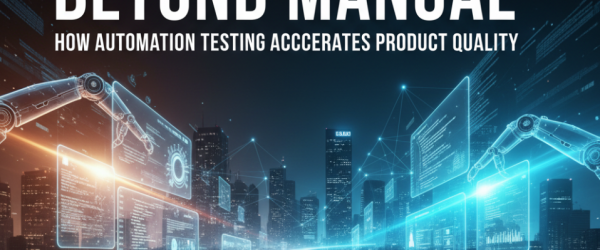Introduction
The role of IT consulting is undergoing a fundamental transformation. Gone are the days when it was primarily about maintaining servers, reducing costs, or implementing a single software solution. In today’s volatile digital economy, businesses face a new imperative: building not just IT systems, but resilient, adaptive, and intelligent tech ecosystems that can evolve with market demands.
This requires a complete redefinition of IT consulting. Modern IT consultants are no longer just technicians; they are strategic architects who design the digital DNA of an organization. This blog explores how this new breed of consulting is essential for building future-ready businesses.
The Paradigm Shift: From System Implementation to Ecosystem Architecture
The legacy model of IT consulting was transactional and reactive. It focused on solving discrete problems—a new CRM, a network upgrade—often creating new data silos and technical debt in the process.
The future-ready model is strategic and proactive. It focuses on designing an interconnected tech ecosystem where platforms, data, and applications work in concert to drive business value. The difference is profound:
- Legacy Focus: Cost reduction, system stability, vendor management.
- Future-Ready Focus: Business agility, revenue enablement, customer experience, and innovation.
A report by Accenture highlights this shift, stating that “81% of executives agree that the role of technology in their organization is shifting from being a supporting function to a core driver of business strategy.”
The Three Pillars of a Future-Ready Tech Ecosystem
Building such an ecosystem rests on three interconnected pillars that modern IT consultants help architect.
1. Strategic Cloud-First Foundation
The cloud is the non-negotiable bedrock of a future-ready ecosystem. However, it’s not just about lifting and shifting servers. It’s about leveraging cloud-native services (such as AI, analytics, and serverless computing) to build a scalable, innovative foundation.
- Stat to Consider: According to Flexera’s 2023 State of the Cloud Report, “87% of enterprises have a multi-cloud strategy, and 72% have a hybrid cloud strategy,” indicating that strategic cloud architecture is now the norm rather than the exception.
2. Data as the Circulatory System
In a future-ready ecosystem, data flows seamlessly and securely between systems, providing a single source of truth. IT consultants architect the data pipelines, warehouses, and governance models that transform raw data into actionable intelligence.
- Stat to Consider: A study by IDC predicts that “the global datasphere will grow to 221 zettabytes by 2026,” making an effective data strategy a critical competitive differentiator.
3. Integrated AI and Automation
AI and automation are the intelligent engines of the ecosystem. They automate routine tasks, provide predictive insights, and personalize user experiences. A consultant’s role is to identify high-impact use cases and integrate these technologies ethically and effectively into core business processes.
Legacy vs. Future-Ready IT Consulting: A Comparative View
| Dimension | Legacy IT Consulting | Future-Ready IT Consulting |
|---|---|---|
| Primary Goal | Reduce IT costs, maintain stability. | Drive business growth, enable innovation. |
| Scope of Work | Project-based (e.g., implement a new ERP). | Ongoing partnership to architect and evolve the entire tech ecosystem. |
| Key Metrics | Uptime, help desk ticket resolution time. | An implemented system. |
| Relationship with Business | Vendor or service provider. | Strategic partner and co-innovator. |
| Technology Focus | On-premise infrastructure, standalone applications. | Cloud-native platforms, APIs, data integration, AI/ML services. |
| Output | A implemented system. | A living, breathing, and adaptable tech ecosystem. |
The Role of the Modern IT Consultant: The Architect
In this new paradigm, the consultant’s role has evolved into that of an “Ecosystem Architect.” This involves:
- Conducting a Digital Maturity Assessment: Evaluating the current state of your technology, data, and processes.
- Crafting a Cohesive Technology Roadmap: Aligning technology investments with long-term business goals.
- Orchestrating Integration: Ensuring new and existing technologies work together seamlessly through APIs and microservices.
- Fostering a Culture of Continuous Evolution: Guiding the organization to view its tech ecosystem as a living asset that requires ongoing investment and refinement.
Conclusion: Building for the Unknown
The ultimate goal of redefined IT consulting is to build a tech ecosystem that is resilient to the unknown. It’s about creating a foundation so agile and intelligent that it can capitalize on future opportunities and navigate unforeseen challenges.
In this context, partnering with a forward-thinking IT consultant is not an expense; it is an investment in your organization’s long-term relevance and competitiveness. The businesses that will thrive tomorrow are those that partner with architects today to build the future-ready tech ecosystems that will carry them forward.







